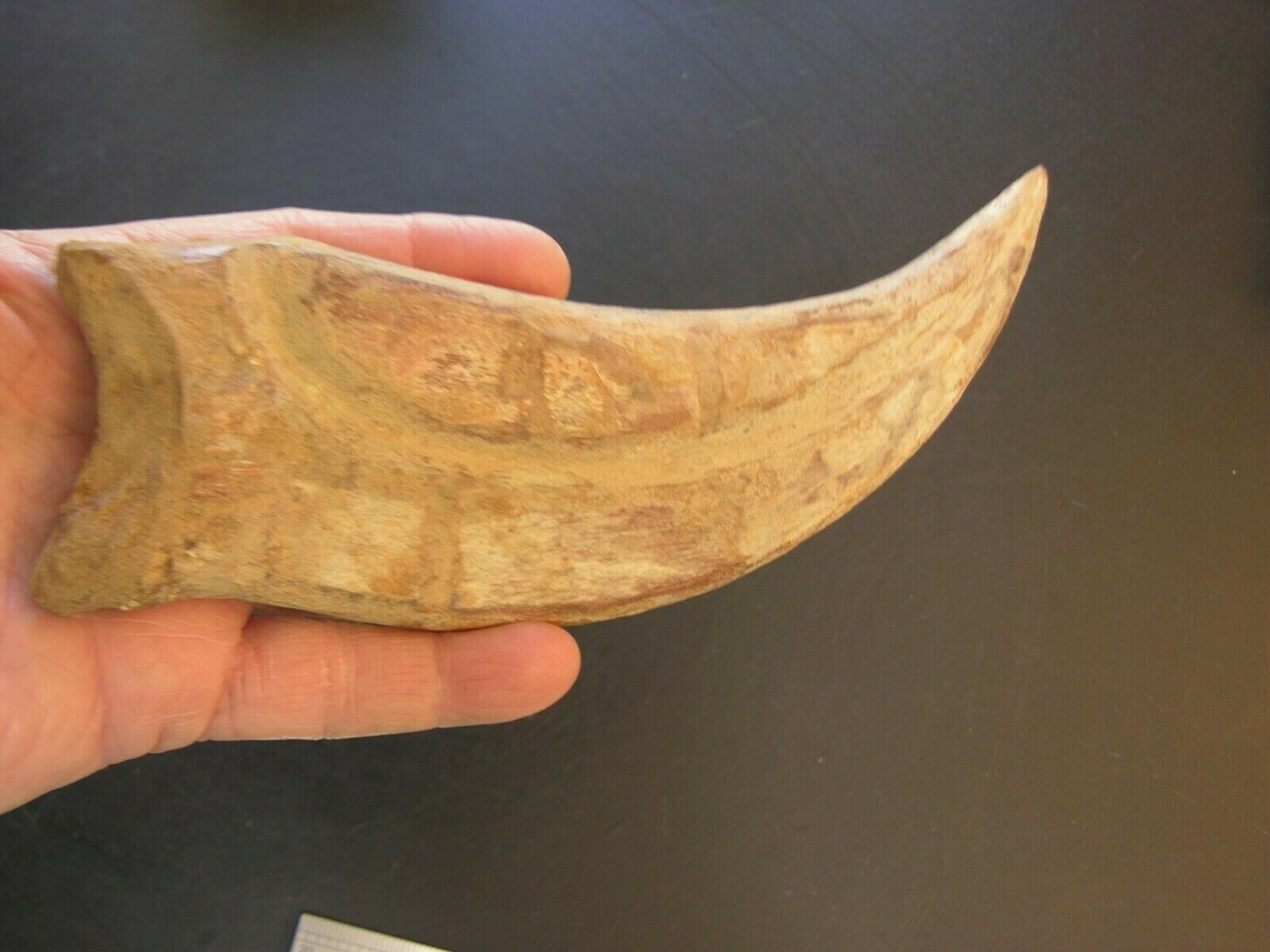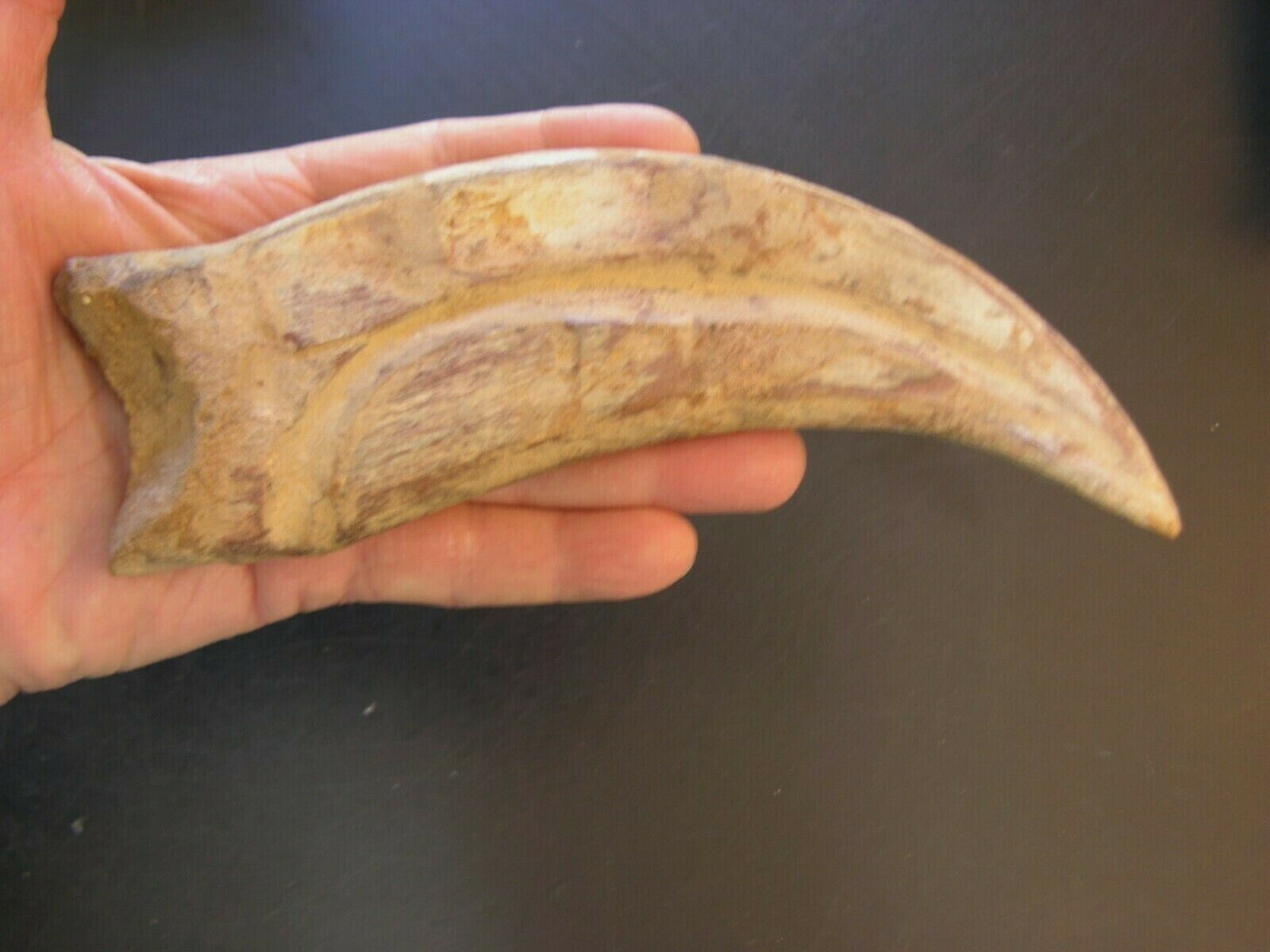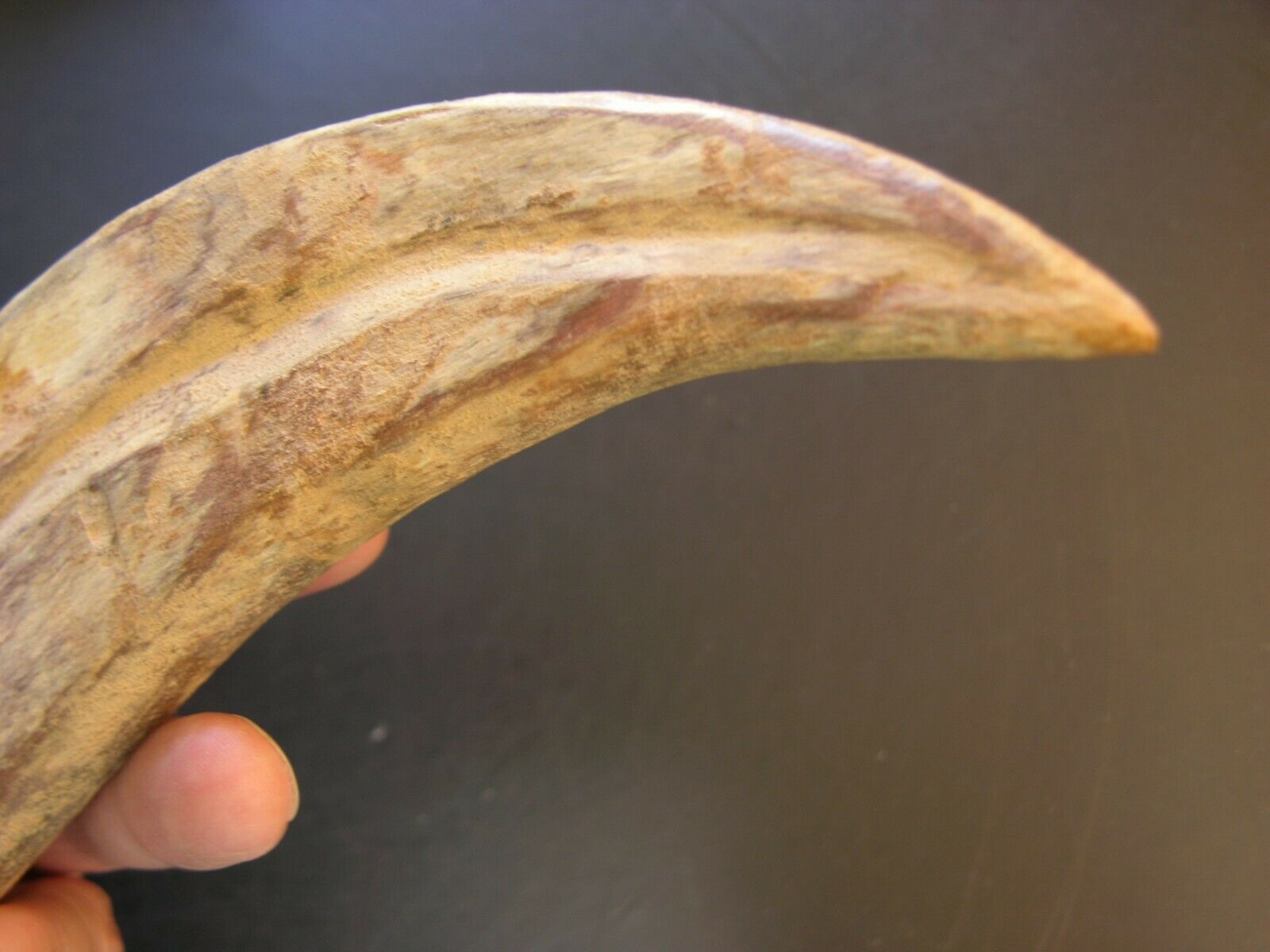-40%
Dinosaur Spinosaurus hand claw fossil RARE authentic bigger 8.5" ds16
$ 1049.13
- Description
- Size Guide
Description
Bigger Spinosaurus claw from the Kem Kem Basin in Morocco in excellent condition very high quality site removal and cleaning withno clear evidence of any restoration or repair.
Spinosaurid hands had three fingers and wielded an enlarged nail on the first finger,or thumb, as a highly modified distal toe bone which formed the bony core of a keratin claw and ends in a claw,as did the sauropods and horned dinosaurs, Baryonyx and Suchomimus . A claw is a highly modified nail phalanx. Substantially complete spinosaurid foot remains are only known from Spinosaurus. Unlike most theropods,which walk on three toes, with the first toe being reduced and elevated off the ground,Spinosaurus walked on four functional toes, with an enlarged toe that came in contact with the ground. The claw of its feet, in contrast with the deeper, smaller and recurved claws of other theropods, were shallow, long, large in relation to the foot, and had flat bottoms.The use of the robust forelimbs and giant recurved claws of spinosaurs remains a debated topic. Somme speculated that Baryonyx may have crouched by the riverbank and used its claws to gaff fish out of the water, similarly to grizzly bears as its primary method of capturing, killing, and tearing apart large prey; whereas its long snout would have been used mostly for fishing.Most agree that spinosaur forelimbs were probably used for hunting larger prey items. . Spinosaurus may be the largest of all known carnivorous dinosaurs, even larger than Tyrannosaurus and Giganotosarurs growing to 60 feet and weighing up to 22 tons.The distinctive spines , which were long extensions of the vertebrae, grew to at least 5 1/2 feet long and were likely to have had skin connecting them, forming a sail-like structure,Spino was a meat eating giant dinosaur that lived on the flesh of other weaker animals and needed a jaw and tooth structure to accommodate crunching up meat and bone hence the variety of teeth surviving today as fossils.
.
Track Page Views With
Auctiva's FREE Counter


















